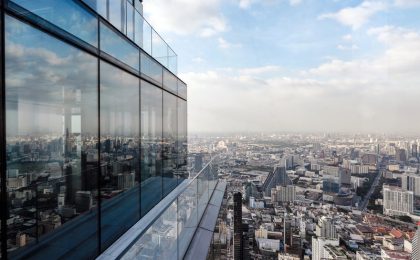Designing outdoor spaces where everyone feels welcome requires a thoughtful approach. Whether it’s a community park, a commercial courtyard, or an urban plaza, these spaces should be safe, accessible, and visually appealing. By focusing on universal design principles, we can create environments that not only serve a diverse range of users but also stand as a testament to our commitment to inclusivity and environmental stewardship.
Identifying the Needs of Users
Before diving into specifics, it’s crucial to understand the various user groups that frequent outdoor spaces. Some visitors might include families with small children, seniors, people with disabilities, pet owners, and fitness enthusiasts. Each group has its own needs, and catering to these can enhance the overall experience.
1. Families and Children
For families, consider including playgrounds, open lawns, and picnic areas. Children love playful spaces, so incorporating elements like slides, swings, and climbing structures can be beneficial. Safety is paramount; ensure that play areas have soft ground cover to prevent injuries.
2. Elderly and Disabled Users
Features such as flat paths, ramps, wide walkways, and accessible restrooms are critical for the elderly and those with disabilities. Seating areas with shade and handrails for support can make a big difference. Additionally, tactile paths and audible signals can be invaluable for visually impaired visitors.
3. Active and Wellness Enthusiasts
Spaces for walking, jogging, cycling, and yoga offer ways to promote an active lifestyle. Marked trails and fitness stations encourage exercise, while serene gardens or water features can provide relaxation spots for wellness enthusiasts.
Essential Design Elements
The design of any outdoor space should be guided by core principles that ensure safety, accessibility, and attractiveness.
Safety First
-
Lighting: Adequate lighting enhances safety during evening hours. Lighting should be placed strategically to illuminate pathways, entrances, and seating areas.
-
Surveillance: Installing cameras and ensuring clear sightlines can deter vandalism and provide security for users.
-
Maintenance: Regular upkeep is essential. This includes trimming overgrown plants, fixing broken equipment, and ensuring all pathways are clear and safe.
Accessibility Matters
-
Paths and Trails: Ensure pathways are flat, wide, and free of obstructions. They should accommodate wheelchairs, strollers, and other mobility aids.
-
Signage: Clear, multilingual signs with braille can aid navigation. Consider using universal symbols to minimize language barriers.
-
Public Transportation: Ensure the site is well-connected to public transportation. Design spaces for easy access and exit for taxis and ride-sharing services.
Visual Appeal
-
Landscaping: Thoughtful planting and imaginative commercial landscaping services can transform a dull space into a vibrant environment. Consider using native plants that require minimal maintenance and enhance biodiversity.
-
Art Installations: Integrate local art to enrich the cultural experience. Sculptures, murals, or interactive installations can serve as focal points.
-
Water Features: Fountains or ponds can offer aesthetic and auditory pleasure, drawing people into the space.
Inclusive Design Practices
The best outdoor spaces make everyone feel welcome. Here’s how to incorporate inclusivity into your designs:
Use of Universal Design Principles
Universal design is about accommodating everyone without the need for adaptation. This means creating spaces that are intuitive and simple to use for all abilities. Consider aspects such as the height of amenities, seating ergonomics, and intuitive layouts.
Community Involvement
Involve community members in the planning process. This ensures the space meets the needs of those who will use it most. Conduct surveys, hold public meetings, or establish focus groups to gather feedback.
Community Workshops
Organize workshops where locals can share their vision for the space. Offer hands-on activities to make the experience enjoyable and productive. Incorporating community ideas can lead to a space that feels personal and valued by its users.
Partnerships with Local Organizations
Collaborate with local organizations to better understand the specific needs of different groups, such as the elderly or disabled communities. These partnerships can provide insights that might otherwise be overlooked.
Environmental Considerations
Modern outdoor spaces must reflect a commitment to environmental sustainability.
-
Eco-Friendly Materials: Use recycled, durable materials whenever possible. This reduces environmental impact and often enhances the aesthetic appeal.
-
Water Conservation: Employ drought-resistant plants and smart irrigation systems to conserve water.
-
Energy Efficiency: Utilize solar-powered lights and fixtures to reduce the carbon footprint.
Icing on the Cake Exceptionally Designed Spaces
Imagine outdoor areas that capture attention and admiration by delivering a blend of functionality and beauty. Sometimes, it’s the extra touches that turn a space into something unforgettable.
Incorporate seasonal decorations and exceptional commercial holiday displays to keep the area lively year-round and attract visitors repeatedly. These displays can enhance the aesthetic and bring communities together in celebration.
Final Thoughts
Designing outdoor spaces that are safe, accessible, and attractive requires a nuanced understanding of the various users and their needs. It involves a commitment to safety, inclusivity, visual appeal, and environmental responsibility. By applying these principles and actively listening to the community, we can create inspiring outdoor environments that not only meet current demands but also set new standards for future developments. Remember, the goal is to make everyone feel like they belong, turning public spaces into shared sanctuaries of enjoyment and relaxation.





